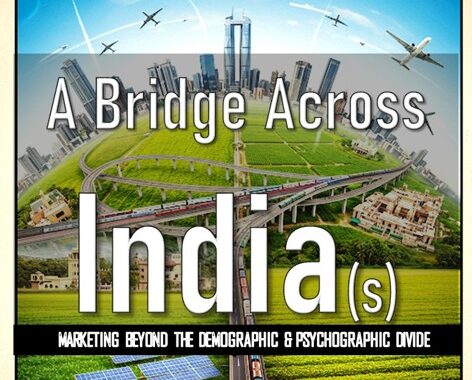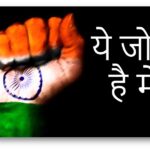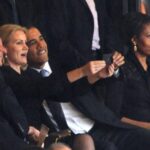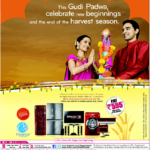To Be Or Not To Be: Should Brands Reinforce or Shatter Stereotypes?
 The germ of this article lies in the recent flutter that an interview by the CEO of a cola major has caused in the sociosphere [1] [2]. This post however, is not to express an opinion either for or against the views put forth but to raise a related relevant question. The question is with regard to stereotypes and the role brands and brand communication should be playing. If at all brands and brand communication have any culpability/responsibility with regard to reinforcing or breaking stereotypes.
The germ of this article lies in the recent flutter that an interview by the CEO of a cola major has caused in the sociosphere [1] [2]. This post however, is not to express an opinion either for or against the views put forth but to raise a related relevant question. The question is with regard to stereotypes and the role brands and brand communication should be playing. If at all brands and brand communication have any culpability/responsibility with regard to reinforcing or breaking stereotypes.As marketers sending out communication for and on behalf of our brands we rely heavily on our (collective/organizational/gut/experience) understanding of the consumer. The endeavor always is to gain and convert that killer insight into brilliant communication that hits home. It is for the keen eye to distinguish and separate the wheat from the chaff.
Brand communication over the years has tended to rely heavily on the stereotypes that society offers. These may be discrete pieces of communication from different brands but to consumers/audiences expose to this communication it is a single mass from which certain subliminal messages emanate albeit without being planned.
To explain my point and to connect back to the germ of this article I shall take the example of the stereotypes about women that get or got reinforced. Now it is important to note that each brand is doing its own bit and approaching it based on what its insight is about its category and consumer. However, they collectively end up reinforcing a certain image.
Take the commercials that were being aired on India television during the late eighties, even well into the nineties. The stereotype that was being reinforced was that of the Indian woman as the dutiful housewife. It was her responsibility to keep the utensils, clothes sparkling clean. She needed to ensure ends were met, kids were fed, even cook food good enough to keep the husband’s boss happy. As if all that were not enough she needed to look good and smell good for her husband when he came back home.
http://www.youtube.com/watch?v=PMYFCb_c0A0
Sign of times well not really, considering it would be round about this time that the Indira Nooyis, the Chanda Kochhars, the Naina Lal Kidwais and the Kiran Mazumdars were climbing rungs of the corporate ladder.
The India of the late eighties and nineties did not exist in a bubble. It was simply taking a leaf out of or getting “inspired by” communication of that was being aired elsewhere in Europe and America. It was taken to a satirical level in the book (and later on the movie adaptations) The Stepford Wives by Ira Levin.
There have been examples of brands attempting to break stereotypes as well. An example that comes readily is a campaign by a personal hygiene brand when they chose to dump the veiled, almost apologetic “Woh zaroori din” (translated: “those important days”) approach and said it like it is.
It’s not as if women alone have been subjected to such stereotypes. Men have been brought up with their own set of expectations to live up to. Advertising is replete with exaggerated versions of males as performers, winners, saviours of the world etc. etc. Gender stereotypes apart, brand communication has at times relied on race, colour and ethnic stereotypes as well. These were perhaps found acceptable in the times they were aired.
Ad creators and brand managers across the world will continue to deal with their existential dilemma of reinforcing or breaking stereotypes that form in our society.
So who really is to blame if one feels obligated to conform to these stereotypes? If it is indeed the society then the answer at some level is I, Me and Myself.
To close a few lines penned by the Bard of Avon from Hamlet.
“To be, or not to be? That is the question—
Whether ’tis nobler in the mind to suffer
The slings and arrows of outrageous fortune,
Or to take arms against a sea of troubles,
And, by opposing, end them?”
Deep Impact: Out of Home…Out of the Shadows!
 Out of home media for years has been meted out step motherly treatment by planners and brands alike. Often receiving spill-over/ left-over campaign budgets and more than often facing the axe when there is a crunch. The fact that there are no universally accepted measures and questionable audits haven’t helped cause either. Planning and measurement challenges apart, till not so long ago OOH was blamed to be a passive, immobile medium. Unlike communication via traditional media that travels to or “reach” the audience, the audience has to reach the medium and therefore the communication itself.
Out of home media for years has been meted out step motherly treatment by planners and brands alike. Often receiving spill-over/ left-over campaign budgets and more than often facing the axe when there is a crunch. The fact that there are no universally accepted measures and questionable audits haven’t helped cause either. Planning and measurement challenges apart, till not so long ago OOH was blamed to be a passive, immobile medium. Unlike communication via traditional media that travels to or “reach” the audience, the audience has to reach the medium and therefore the communication itself.Not a very flattering analogy, but an analogy nonetheless OOH media is the Cockroach of the media biome, it was there long before anybody came and shall remain long after everyone is gone. Staying with the concept, OOH in the past few years has evolved like no other. Having wholeheartedly embraced technology OOH today has managed to overcome a few of its handicaps and even managed to convert some of its weaknesses into strengths.
From wall painting to billboards to segment/matrix displays to screens to pods to holograms is a whole lot of evolution to boast of in one generation! OOH today is visual, audible, tangible, flexible, customizable, you name it. While measures are still an issue a significant dimension that OOH has added to itself has been IMPACT.
More and more brands led by their PR departments are venturing out and using OOH as an impact tool. The talk value of such exercises not only multiplies the “reach” by viralling on social media but also features on traditional media because of its news worthiness contributing significantly to the earned media kitty. Delivering the much required RoI the bean-counters and the “measurability” for whosoever needs to claim or declare success, in other words everyone is happy.
Whether its entire airplanes painted (or stickered) with your brand or virtual cheetahs atop cars or building projections brands are seeking “Innovation” and “Impact” with every single campaign. OOH today is not a unidirectional communication anymore. It has become an experience delivery mechanism. The tangibility of the medium and the natural ability to be “larger than life” obviously come in handy. Brands today do not just want a good communication, no not even a great communication they want awesome. OOH has emerged as the answer to how do I physically engage an audience, make them gasp and say wow! Not only that make them record, capture and share!
OOH including transit, street furniture, ambient delivers the edge brands need. No longer are they shackled by footfalls and traffic density. In a pioneering move, the Rapid Metro in Gurgaon has offered entire stations as an asset with the brand integrated into the station name!
Out of home, out of box and out of the world is new mantra in an innovation hungry world. About time the brand guys take note and ownership of this medium and pull it out of the shadows and the burden of expectations based on traditional media.
Leaving you with a personal favourite, do pardon the bias 😉
http://www.youtube.com/watch?v=SX2Gd-kqV5s
The Green Mile : Are Brands Walking the Talk?

Are Brands Walking the Talk? When was the last time you paused to think of the environmental consequences of our actions? Wait. Did I just say environmental? Right. Most of us find it hard to believe that the choices we make at an individual level as consumers are of any consequence to anyone else. However, as marketers we have many a time attempted to speak to this very side of the consumer and awaken their conscience. Green Marketing as it has come to be known has been around for quite a few years now. Several brands have incorporated “green” into their scheme of things. As the world environment day nears we shall yet again witness brands trying to associate with green in turn expecting consumers to associate with them/make the right choice.
The question that needs to be asked though is, “Has it had any impact?” How many brands reported back on the impact “the choice” really made in clear quantifiable terms?
It is tough for the cynic in many consumers to actually believe that the brands have their heart and soul in the causes they espouse. The responsibility of making the consumers believe in a purpose beyond the commercial lies with us marketers. It is for us to not make the consumers think of them as “gimmicks”. What good is a commitment that is doubted?
Several brands have in their own way communicated their “Green” intent. Some have coaxed the customers to partake in their cause whilst others have demanded a premium on account of being green. However, not all have done a good job of sustaining (pun unintended) the conversation. The efforts by most brands have tended to be sporadic. A TVC here, a print ad there and oh yes the digital led activation too! In short the treatment has been that of a campaign.
One wonders whether these efforts are less owing to intent and more due to regulatory pressures. Atleast as far as India is concerned there is the mandatory 2% CSR rule (not necessarily to be read as green initiatives though). Are the brands then doing whatever it is they wanted to do in the first place and giving it the green tint? There are no easy answers for that one. The day is not far away when organisation shall need to start reporting their carbon credits along with other financials.
In all fairness there are some brands that have visibly stuck to the task, brands that have integrated green into their way of working beyond product and design. Some are already putting these principle into practice whilst others are preparing to. Some me that demonstrate sincerity and commitment while some smack of commercial opportunism with little follow up. Here is an attempt to showcase some of those efforts that caught the author’s eye. Please judge for yourselves.
Nokia
http://www.youtube.com/watch?v=PaGO4bMZQfk
http://www.youtube.com/watch?v=Rwvn9CM0Oxw
http://www.youtube.com/watch?v=63tEC9Hf5Gg
More on Sustainability from Nokia
Toyota
http://www.youtube.com/watch?v=VT9dOTSnABY
http://www.youtube.com/watch?v=kp6ikptlvik
GE
http://www.youtube.com/watch?v=xvTuoXWCH1c
http://www.youtube.com/watch?v=MYGIVg-jgmY
Killer Jeans
Minus One Project (Cheil/Samsung)
The Green Mile is a long arduous path, there unfortunately are no shortcuts. Brands do not need necessarily turn crusaders, they have every right and responsibility to ensure profits for their stakeholders. Point is, once they signal intent they must walk the talk.
#Selfie Obsession: Are Brands Clicking it Right?
 If you are a marketer who has clicked to read about this, chances are, you are as much as at a loss of understanding as I am with this selfie business. Or, if I were to play with words, the disconnect between selfie and business.
If you are a marketer who has clicked to read about this, chances are, you are as much as at a loss of understanding as I am with this selfie business. Or, if I were to play with words, the disconnect between selfie and business.Yes, “buzz” and “talkability” are mandates for any brand that exists in the sociosphere. But in my book they can be considered lead indicators of a brands virulence. The real measures have and should according to yours truly always remain in the business realm.
Selfies seem to be the newest big thing on the internet these days or to put it in real terms calling it one is. The rapid proliferation of social networking if nothing else, has given tremendous fillip to the narcissistic instincts of the digital natives. If one were to observe carefully most us have started leading these digital alter-lives and as much as we hate to admit it are pre-occupied with them. Point is, people have been taking self-pics ever since they put cameras on mobile phones and for as long as social networking sites have been around. The proof lies in the fact that with over 4billion taking pictures with their mobile phones, Nokia has perhaps sold more digital cameras by a factor of A VERY BIG NUMBER than the nearest camera maker and that Facebook carries more pictures than the Picasa’s of the world.
So what started as an alleged faux pas with the Obama selfie has snowballed into an acceptable behaviour over a short span of a few months with the Ellen DeGeneres selfie at the Oscars. So much so that we now have marketing campaigns built on selfies. A departure from an era not so long ago where this would have been the digital activation angle for a larger thought.
Ellen @ Oscars Selfie Obama @ Mandela Funeral Selfie The concept of #Selfie is inherently linked to cosmetic brands and as mentioned earlier several brands decided to ride the selfie trend and as usual some have it together some sadly don’t. As marketers we tend to get swayed and tempted by latest trends. Under the guise of innovation we flirt with these trends with or without a defined purpose. The flavour the past couple of seasons were flash mobs countless brands spent millions of dollars behind these trends. Someone somewhere must pause to think whether having a new angle on the whole thing is sufficient to press the go button.
Here’s a compendium of campaigns that I came across. Do take a look and judge for yourselves which ones actually helped the brand grow and which ones were “Oh! We did that too”.
http://www.youtube.com/watch?v=o6NVxRunn_E
Till such time that we find a new craze the #Selfie Obsession continues.
Buy Another Day
SALE! SALE! SALE! UPTO XX% DISCOUNT ONE DAY ONLY ONE +ONE FREE
We have all as marketers or sales people resorted to promotions where we have cross subsidized or discounted our product to get those extra sales numbers to make our quotas. Along the way we have capitalized on buying occasions in the calendar and even created occasions for people to buy. Whether it’s the seasonal purchases around Thanksgiving-Christmas in the Western world or Diwali-Eid in India marketers have tried most all the tricks in the book to get those extra numbers for the topline.
Like I mentioned, we also forced some occasions as buying occasions wherever we sniffed latent buying behaviour in the culture. Sometimes even manufactured buying occasions around public holidays. Whether purchase for consumption or gifting the calendar is choc-a-bloc. From apparel to mobile phones to financial products everyone has jumped onto the bandwagon.
From the brands perspective it is a lot of preparation and costs. It involves filling (sometimes even stuffing) the channel with products and a promise of a spike in sale. Communication to spread the word and of course whipping the sales guys right down to the frontline.
How many times have we gone back and told our bosses that the market is correcting itself post the spike in sales?
From the consumer perspective though what really is available for them is a deal. Take it or leave it!
Post the internet shopping revolution and the retail revolution however, a deal is pretty much available on an everyday basis! From pizza to mobile phone I can buy it sitting at home when I want, from where I want and with a choice of discounts and promotions to avail. Walk into any organized retail and there are deals for the taking.
Consumers of today seldom get swayed by these gimmicks that we marketers try from time to time. Or may be they do. We tug at their heart strings, seek refuge in culture, the works.
http://www.youtube.com/watch?v=YAcxjrGe7v0
But does the consumer buy gold because it is auspicious to buy or it is a nice feeling to gift or it is available at a price to contrary to the trend and market? Well the jury may be still out on that one.
So the question really is whether there is any merit in creating and marketing these special days. Can brand dollars not be saved and added back to the bottom line instead. Will they continue to bite the bait and buy today because you have built up today as a great occasion to buy or will they just buy another day!
In the Line Of Fire: Dealing with Adversity
 They say that adversity is the true test of character. It is a fact that everyone be it individuals, communities, countries, teams, businesses at some point or the other shall face times that are tough. We as marketers have always looked for examples in war, sports, celluloid, politics, simply put life for understanding and propounding theories with regard to brands and their behaviour.
They say that adversity is the true test of character. It is a fact that everyone be it individuals, communities, countries, teams, businesses at some point or the other shall face times that are tough. We as marketers have always looked for examples in war, sports, celluloid, politics, simply put life for understanding and propounding theories with regard to brands and their behaviour.In the tough times do emerge interesting characters who deal (or don’t deal) with adversity in their own unique way and more often than not brands that we use, buy and deal with fall into one of these. For the purpose of this post I have chosen to label these characters and shall explain the traits of each citing examples from politics, sport, film etc. as applicable.
 The Crusaders: These are people/brands that believe and live for a larger cause and continue to do so even in the times of adversity. Regardless of the tide being in their favour or against the cause remains front and centre to everything including their response. The focus on the larger good often may even come at a high price but are well worth the sacrifice. There are two examples that instantly strike my mind one from the world of business, the other from politics. In both these cases there was a higher price to pay and the brands/people in question did pay.
The Crusaders: These are people/brands that believe and live for a larger cause and continue to do so even in the times of adversity. Regardless of the tide being in their favour or against the cause remains front and centre to everything including their response. The focus on the larger good often may even come at a high price but are well worth the sacrifice. There are two examples that instantly strike my mind one from the world of business, the other from politics. In both these cases there was a higher price to pay and the brands/people in question did pay.
Case 1: Nokia Battery Recall
An isolated incident of a battery exploding became a PR nightmare for brand Nokia, rumour mills working overtime did not help the cause either. The brands response however did not go through the traditional cycle (at least to the outside world) of denial, acceptance, risk assessment and corrective action. The brand behaved in an extremely responsible manner. The risk, probability and reasons were explained to the consumer, a robust mechanism was first put into place and the brand then recalled the batteries in question. Not only did the brand gain consumer confidence it shot up to the #1 position in the Most Trusted Brands survey in the same year!
Case 2: AAP
The jury is still out on this one. The Aam Aadmi Party almost swept the Delhi assembly polls nudging out a formidable Bhartiya Janata Party to form the government in Delhi. The party under severe pressure to deliver on its tall promises in its blink and you miss stint resigned from power on their rai·son d’être; their version of the Jan Lokpal Bill.
 The Fighters: The label is self-explanatory. These are brands or individuals that bring about changes in themselves, work-out hard and train to come back better and stronger. They are extremely competitive in their fabric and hate losing to anyone or anything. They always believe that their best shot is the next one. What shouldn’t be undermined here is the emotion is complemented in full measure by blood, sweat and toil. Here are examples of 3 individuals to build my argument.
The Fighters: The label is self-explanatory. These are brands or individuals that bring about changes in themselves, work-out hard and train to come back better and stronger. They are extremely competitive in their fabric and hate losing to anyone or anything. They always believe that their best shot is the next one. What shouldn’t be undermined here is the emotion is complemented in full measure by blood, sweat and toil. Here are examples of 3 individuals to build my argument.
Case 1: Rocky Balboa
Yes its clichéd and has been over-used but the success of the Rocky franchise over twenty years, if nothing else has taught us one lesson; a fall, a failure, a defeat is not the end, it is the beginning of your climb back to the top. We love it when our heroes have their backs against the wall. We love it when they scratch for every inch and fight with every ounce of strength in their bodies. Somewhere perhaps we all identify with failure and success has always been aspirational. Here is a brand that ruled got written off, yet came out a winner!
Case 2: Yuvraj Singh
It purely is a question of individual assessment, but then blogs are just that aren’t they? Here is a guy who was perhaps at the peak of his prowess. The quintessential watch out for this guy from the start he delivered big time and was the hero of India’s 2011 ICC World Cup triumph. Then followed the fight with cancer and his amazing return to health and fitness in the span of a year. His performance have been debated and arguably have been patchy and nowhere near his best. As much as we love making heroes we seem to love pulling them down even more. Yuvraj as I write this piece has his back to the ropes and carries the burden of India’s loss in the ICC World Cup T20 finals. A 100 bucks say that the story ain’t over.
Case 3: Steve Jobs
This I use as an example from the world of business. A man who was kicked out from the very company he founded. Did his time and came back with a bang! The brand Steve Jobs was as much about not giving up as it was about innovation. Whether in life dealing with his ill-health or in business the approach and resolve remained consistent.
All the of the above had perseverance and preparation in common apart from a come-back.
 The Rabble-rousers: These are the wise guys the smart Alec’s or the sly foxes of the world. Their method of dealing with trouble is to create diversions or smoke-screens. They are also the brands/people that pick, point to and amplify flaws in their competition when themselves in trouble. Yes as much as we would like to disbelieve the Dirty Tricks Department does exist and the if I am bad he’s badder game has been played in sports, politics and business alike. To avoid controversy I will not cite examples or names but would point out to a two political outfits in a prosperous western state of India. They are by no means the only examples of fighting adversity with diversion.
The Rabble-rousers: These are the wise guys the smart Alec’s or the sly foxes of the world. Their method of dealing with trouble is to create diversions or smoke-screens. They are also the brands/people that pick, point to and amplify flaws in their competition when themselves in trouble. Yes as much as we would like to disbelieve the Dirty Tricks Department does exist and the if I am bad he’s badder game has been played in sports, politics and business alike. To avoid controversy I will not cite examples or names but would point out to a two political outfits in a prosperous western state of India. They are by no means the only examples of fighting adversity with diversion.
 The Faders: These are the kind that never stood up and fought. For reasons best known to them they never responded to the situation or put up a fight. They laid down their weapons and turned their backs to the situation.
The Faders: These are the kind that never stood up and fought. For reasons best known to them they never responded to the situation or put up a fight. They laid down their weapons and turned their backs to the situation.
Case: Dr. Manmohan Singh
Hailed as the father of India’s liberalization and economic surge the Prime Minister of India has been under the pump for close to two years and there seems to be no end in sight. The media and opposition alike have accused him of everything including being weak, inactive, indecisive etc. For a brand that he once was his “history will judge me kindly” press conference was a sad sight to watch.
 The Deservers: These are the brands/people that deserved what they got. They eroded and abused one of the core components of a brand Trust. Their vehement denial of any wrongdoing and desire to retain the high pedestal dragged them into infamy, deservedly so.
The Deservers: These are the brands/people that deserved what they got. They eroded and abused one of the core components of a brand Trust. Their vehement denial of any wrongdoing and desire to retain the high pedestal dragged them into infamy, deservedly so.
Case 1: Lance Armstrong
Individuals and businesses alike would have taken inspiration from Lance Armstrong. However, the web of deceit that he spun left a bitter taste in the mouths of everyone who believed his incredible tale of will over all else! The collateral damage was the loss of reputation for the Lance Armstrong Foundation that did genuine good work for and on behalf of cancer patients. Today it exists under the name of LiveStrong and a stigma.
Are these characters exhaustive, are there more? The author believes that the characters though not exhaustive are definitive of what one gets to see.
To close I would like to draw attention to an article titled “The Inevitability of Fires” by Shekhar Swamy of RK Swamy BBDO fame in the book Brands Under Fire.
In his article Swamy talks about how crises are inevitable and on the importance of TRUST and TRUST Balance, relevant excerpts as below.
It is a truism that any crisis can confront any brand or company at any time. It’s not a question of whether any crisis will occur in a brand’s life. It is only a question of when.
At the core of all successful brands lies that big T word-TRUST. When that trust is violated, the reaction is one of hurt and suspicion that can easily turn to anger and rejection.
The only way to be ready for any crisis is to continuously build and hold a vast credit balance of TRUST vis-à-vis the consumer. Indeed this is true in any relationship. As long as there is a credit balance, one can draw on this in times of crisis.
The Crusaders and Fighters make credits on account of their actions into their TRUST Balance, the Rabble-Rouser perhaps manages to get away with neither a credit nor a debit, the Faders loose credit significantly and the Deservers are the ones who go bankrupt!
The Sixth Sense: Appealing to Consumers with Mobile Advertising
 Marketers of today have to contend with a media consumption pattern that is very different say from even 5 years ago. Where the proverbial push comes to shove, India was always expected to leap-frog technology generations.
Marketers of today have to contend with a media consumption pattern that is very different say from even 5 years ago. Where the proverbial push comes to shove, India was always expected to leap-frog technology generations.For example not conforming to the traditional diffusion of innovation cycles India aborted its pager journey and quickly jumped onto the mobile phone bandwagon.
And what a ride it has been! Almost 19 years since the first mobile call in India was made possible, India has a mobile subscriber base just shy of 900Mn and almost 176Mn subscribers accessing internet through their mobile devices and 15Mn broadband subscribers. If the service providers play their cards right and the powers that control don’t get greedy the data revolution beckons!
Just for perspective, even the current number of mobile subscribers in India is 3 times the population of the United States, there are only six countries in the world that have a population in excess of 176Mn (the reported number accessing internet through a mobile device) and finally there are 175 countries that have a population less than the broadband subscriber base in India. Having posted phenomenal growth rates as a category the recent explosion has been in the smartphone space. In the last two years alone, smartphone shipments have grown by over 225%, an estimated 12Mn smartphones shipping every quarter in India during the past 2 quarters.
Point is, numbers in an Indian context have been and are always going to be there for taking. It’s a whole different question if we start peeling the onion layers and start getting down to the real stuff which is engagement levels.
The focus on ROMI or the Return on Marketing Investment has never been higher. With marketing budgets in absolute terms pointing south for most brands a multiple X return is the constant lookout of most marketing planners. Couple that with amount of measurability digital media affords, the growth in internet consumption using mobile devices and we can start to understand demand-supply dynamics.
Digital marketing brought in new paradigms and marketers such as us started living with the so called new rules of communicating with our customers. Mobile marketing has been a close follower of its cousin and is invariably clubbed with and is a sub-set of the “Digital strategy” of brands.
The concern that I would like to put forward is that we somehow seem to be applying same or similar framework to mobile as that of traditional internet marketing. And why should we be not? One could argue since numerous reports tell us consumers are doing the same things on mobile internet as the traditional desktop/notebook internet.
So why mobile advertising should be treated differently?
Communication sent out by brands has to appeal to the consumers senses for it to register. The mobile today is an extension of the consumers self almost an appendage. It is the consumer’s sixth sense! It connects the person to whatever is relevant at a given point in time, more importantly in space! Augmented Reality or AR as most of us have started to refer to it has been around for a while. Sadly though, marketers are yet to figure out its best use.
Keeping the above in mind, while building their mobile advertising plans brands should perhaps go back to the very basics of planning communication figuring out the Who, When and What.
Who to speak to. The quintessential Target Audience definition now with pin point precision
When to speak to them. Approach with an understanding of what they would be or have been doing. Which marketer has not built/studied a day in the life of the target consumer?
The additional dimension that mobiles have brought about is where. Brands therefore need to weave in the where into the context of the communication. Fortunately technology affords us this luxury.
With mobile advertising Time & Space are to my mind, an imperative.
Example, an 18 year old urban female mobile phone user who is a frequent YouTube or an Internet Radio user would be subjected to a certain kind of advertising because there are a certain set of brands that want to target her. Now, say if a cosmetic brand had to say different things to at different points during the course of the day they technically could and some brands are. It is common place to super-serve a certain segment and the wasted communication on rest of the audience is considered acceptable collateral damage.
Where is an extension of the logic and potentially an opportunity to give different messages. The same cosmetic brand could communicate differently depending upon whether this 18 year old girl was commuting, in her college canteen or sitting in a café in a mall? Time and space!
In the digital space brands are striving for engagement more than anything. So while we may still be buying and selling in CPM, CPC and CPV terms and busy calculating our ROMI basis the conversion rates. What is going to really bring in results is the quality of engagement that brands have with their TG.
Engagement is a function of opportunity & dispensation and the “where” has a significant impact on dispensation.
Brands, creative agencies, digital agencies, media agencies….anyone listening!
















